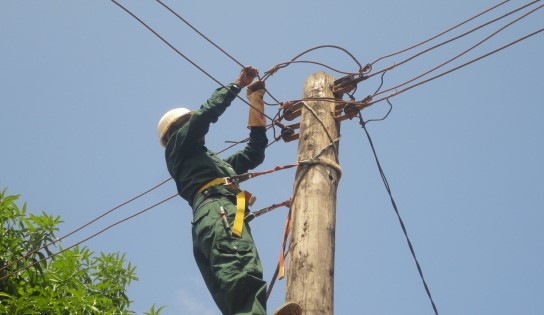Power cuts in Tanzania to be reduced by 85 percent as Nyerere Dam is activated

Minister of Energy Doto Biteko gestures as he speaks during a visit to the Julius Nyerere Hydropower Project on February 25, 2024. He is flanked by the Minister of Water, Jumaa Aweso, and other government officials. PHOTO | COURTESY
What you need to know:
- Upon completion, the Nyerere Dam will have a capacity of 2115 megawatts, supplied by nine vertical turbines, with each turbine having a capacity of 235 megawatts.
Dar es Salaam. Tanzania's perennial struggles with power supply could soon become history as the country's Julius Nyerere Hydropower Project (JNHPP) was activated yesterday with an initial supply of 235 megawatts to the national grid.
At the same time, an additional 235 MW is expected to be added to the grid in March this year.
The project, which will cost the country $2.9 billion (Sh6.6 trillion) upon completion, commenced construction in 2019 under the supervision of a consortium of Egyptian firms, Arab Contractors and El-Sewedy Electric.
The Deputy Prime Minister, who doubles as Minister of Energy, Doto Biteko, said that Tanzanian President Samia Suluhu Hassan and Egyptian President Abdel Fattah El-Sisi are expected to launch the project's operations in mid-March 2024 officially.
“Power rationing in the country will be reduced by 85 percent with a supply of 235 megawatts in the national grid. We will also supply an additional 235 MW by mid-March this year to completely solve the power rationing problem," said Biteko during a visit to the site yesterday.
Upon completion, the Nyerere Dam will have a capacity of 2115 megawatts, supplied by nine vertical turbines, with each turbine having a capacity of 235 megawatts.
One of the turbines (number 8) is now active, with turbine number 9 to follow in March 2024 as preparations for turbine number 7 are underway.
This latest development is good news to Tanzanians, both in the household and the business community, who were heavily affected by the constant power rationing. In efforts to address the rising concerns, the government had made various promises that ushered hope for a solution; however, at the height of the woes, such promises were often criticized for being more abstract.
The activation of the first turbine is expected to calm the jitters, as a complete solution to the power challenge is eagerly anticipated.



